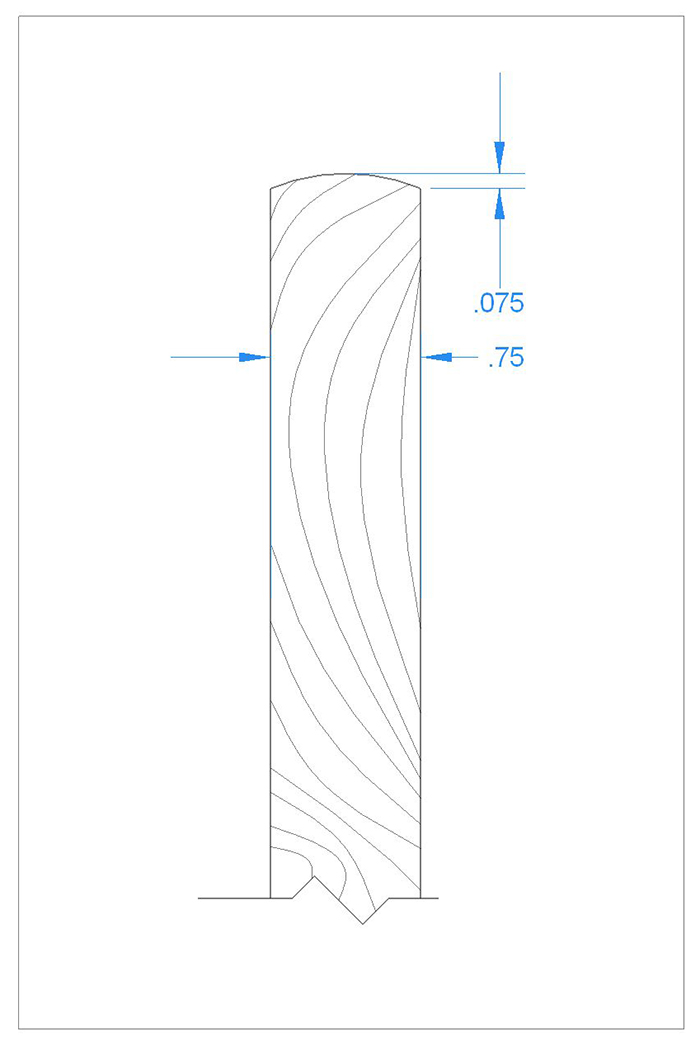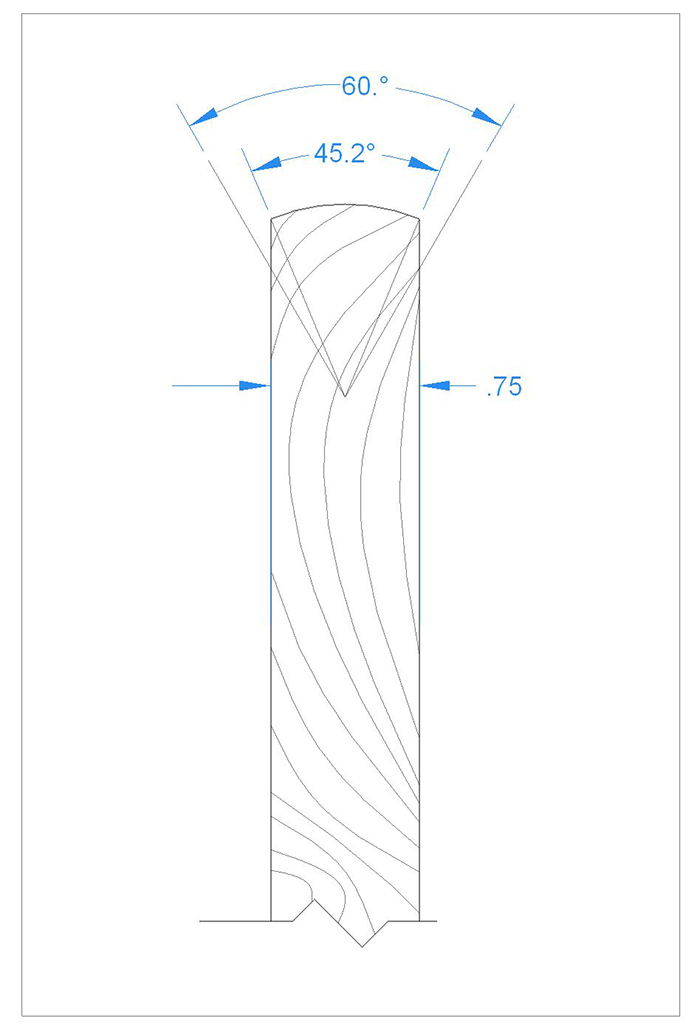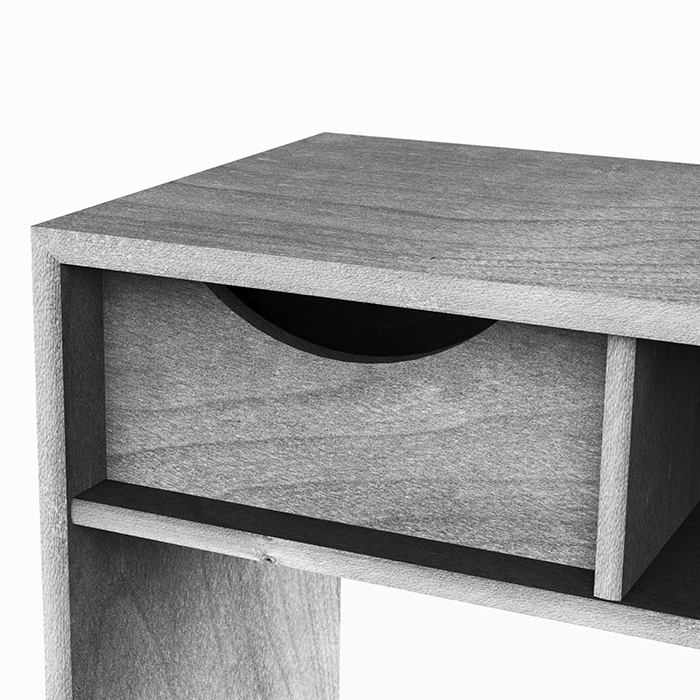To All Designer/Makers,Woodworkers and the Drivel Starved Nation;
In a couple of days we will announce the first profile kits for the HP-10 Foxtail Convertible Plane. There will be a total of four profiles and I thought it might be helpful to share the “why”…
As promised when we introduced the HP-10, the first set of HP-10 profiles are for crowned edges. For those of you unfamiliar with crowned edges, it is an elegant alternative to square edges in your projects, (which work some times) but are often the hallmark of design compromises caused by working within existing capabilities. The use of crowned edges not only creates a sensuous edge, but by their nature, allows for the addition of shadows and depth which is almost always more visually interesting than planar surfaces. There is nothing sexy about a dead square edge in wood.
Crowned edges can be achieved on a router table, a spindle shaper, by scraping/filing, by spokeshave, or by hand with a crowning plane. Of all the options, the hand plane option with a crowned sole requires no further work (no sanding), and can be done without a dust mask or hearing protection. For these reasons, it is my favorite way to employ this design element.
The radius of the crown is determined by the ratio of the edge width /10 (give or take a little). The illustration below helps explain this ratio;

All of the irons for the HP-10 cut with the bevel up which is unusual for hand planed profiles. Because of this, it is ideal for crown planes to achieve their intended result by staying within a 60 degree cutting sector as illustrated below;

In the illustration below, you can see how a simple detail like a crowned edge can become a design theme as opposed to an add-on detail. When used as a theme, the elegant simplicity offers so much more to the viewer than flat edges and 90 degree corners, there is depth, there are shadows, the edges invite touch and it all adds up to visual interest – these things don’t happen by accident;

In this example, the crowned drawer pull cut-out was done by hand using the same ratios. If I were to add a pull to the drawer front instead of the cutout, it would most certainly reflect the theme of the crown.
What is interesting in this example, is that the horizontal and vertical members also shrink by 10% per occurrence. There is zero reason that the drawer shelf (90% the thickness of the carcase) should be as thick as the carcase and there is little reason to making the drawer divider (90% the thickness of the drawer shelf) the same thickness as the drawer shelf so three different crown diameters were used – even though it appears they are all the same. It is an important detail to have them look all the “same”, but what you are really seeing is an illusion, as the stock narrows, the diameter of the crown must shrink accordingly. What you see in this example is impossible with a single diameter. Lastly, the edge set-back is equal to the crown height for that particular piece, they too get narrower as the stock thins. This consistency is important.
The HP-10 is designed to work on stock up to 1-3/4″ (44.5mm) thick and it is possible to to crown all thicknesses between 1-3/4″/44.5 mm down to 1/8″ (3.2mm) with the following four crown diameters; 4.5″ (114.3mm), 3″ (76.2mm), 1.625″ (41.3mm), and .5″ (12.7mm).
Sharpening crowned irons is easy with our custom aluminum hones and unlike the hones for the HP-6, we will make a single, four sided hone for all four profiles.
The other aspect of the HP-10 we are going to change from our experiences over the last decade with the HP-6 is there will be a single box for all four profiles and we will use this same box size for all profiles moving forward. This will allow you to either use the foam inserts to line custom drawers that YOU make (we are not going to make cabinets or storage chests) or simply stack the boxes, the end caps will be clearly marked with the profile images.
I hope you enjoyed this little bit of design theory. As always, the success of a piece is almost always in the details. Crowned edges are clearly a beautiful option for casework, but will also work wonders on table legs, railings, and a host of other applications where you want your wood to feel and look sexy.
-John
Math Behind Crowned Edges in Woodworking

Thanks for this lesson, John. I’ll look forward to putting it into practice. I’m pleased that you’ll be using a set box size for the profiles – that will certainly make organization easier. These crowning profiles will be a very welcome addition to the HP-6 crown – I often found myself with too wide a board to use the HP-6.
I’ll be checking the BCTW site frequently to see the new profiles!
— Peter
John: I was curious about the designation “HP-9.” I think (in a hazy, senile sorta way) that originally it was going to be a complement to the HP-8. Then I think (again in a hazy way) you mentioned the HP-10 had pushed ahead and you’d go back. Is this to be a mystery of numeration for future generations of BCTW collectors of the sort that plague OCD collectors of Stanley planes?
Your fan, Dave
Very cool, I never thought about how graduating the different elements in a piece could be so powerful and that the crown sizes needed to be adjusted as well.
How about making a crowning spokeshave to deal with curved elements? (You give and you give, but some of us just always want more.)
One last question, will the hone have a “slot” in the profile storage foam? Really not sure if it would matter to me or not; I keep my HP-6 hones with my sharpening stuff, probably do the same if there wasn’t a place in the set.
-Rutager
Dave-
I have an HP-9 in the hopper. Don’t know when it will be done.
John
The Crown Kit box will come with a slot for the 4 sided hone.
John,
Will the hone do the iron in the 50 crowning plane or the CT-9?
-Rutager
No. I have redesigned the irons so sharpening at 30 degrees will put on a micro-bevel. Way easier to sharpen.
John
so, will the 1″ crown for the HP-6 sharpen on the 1″ section, or will the micro-bevel engineering mess it up?
Any chance besides “fat,” that you could toss another 3 sided hone into the machining mix for the SE, CT-9 and the HP-6? Or what the heck, how about another 4 sided one and add the .5″ HP-6 on it as well.
-Rutager
Rutager-
The hone will only work on the profiles for this kit, and the diameters are; 4.5″, 3″, 1.625″ and .5″. This combination will allow you to scale your crowns on all stock thicknesses from 1.75″ down to .125″. Pretty cool.
-John
John,
Building on Rutager’s request for even more, what if you were to redesign the boxes for the HP-6 profiles to be consistent with one another? I suspect that there are those of us that would be happy to buy empty “new” boxes to more easily store our profiles/hones for that series as well.
Mike
Mike-
That is an excellent suggestion. We can make new foam inserts and standardize the boxes for the HP-6 and make them the same size as the HP-10.
We will do this.
John